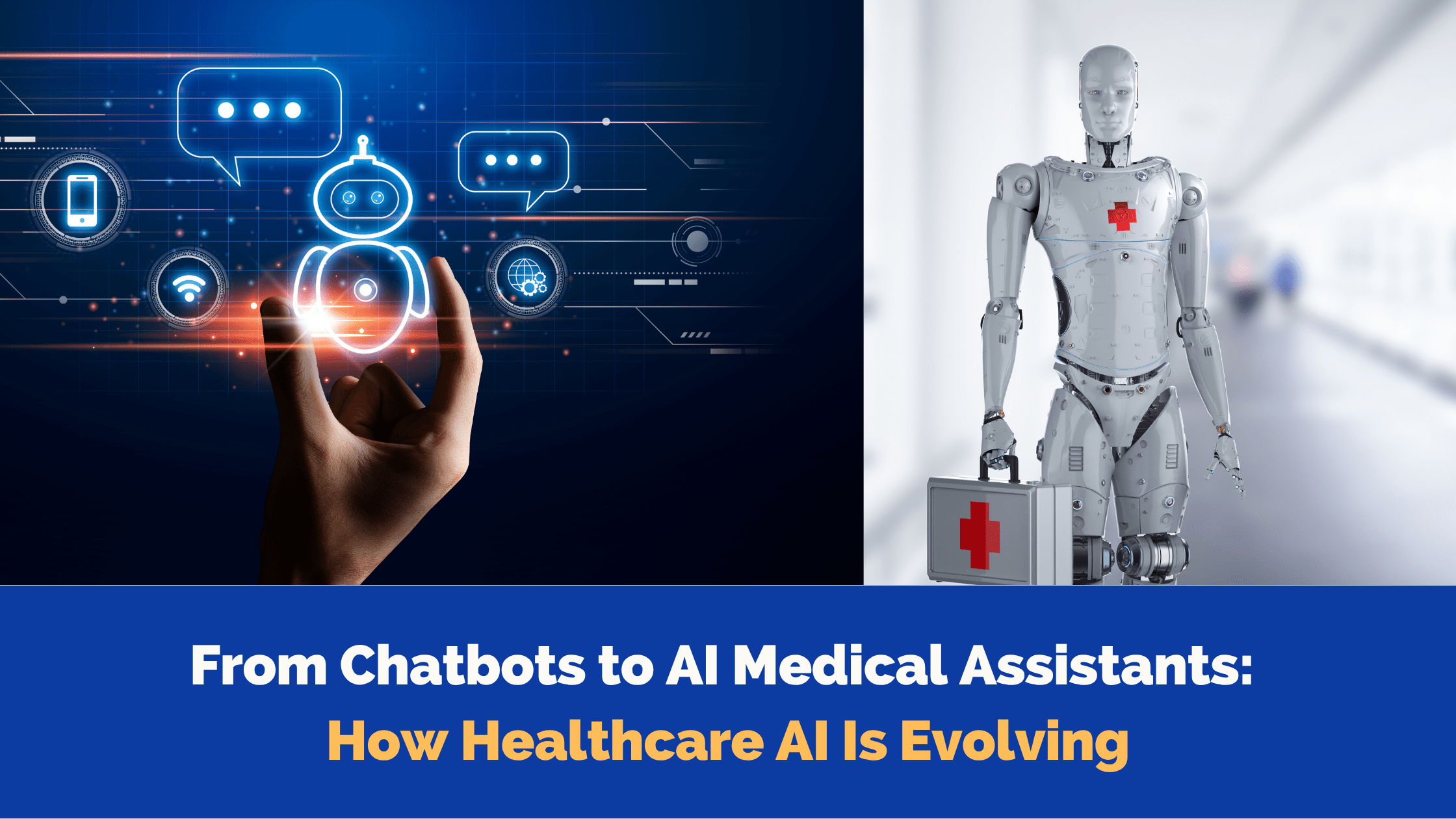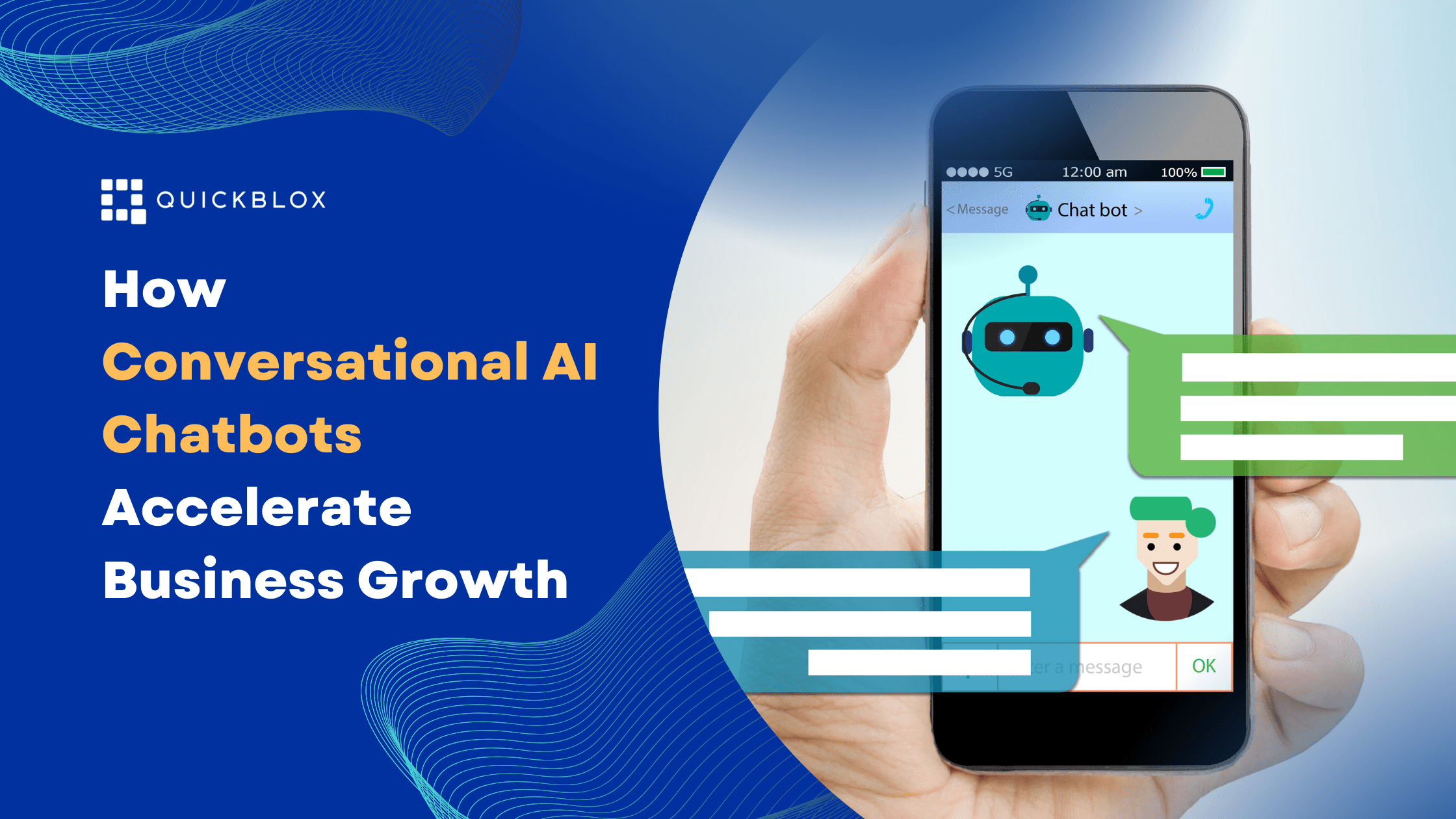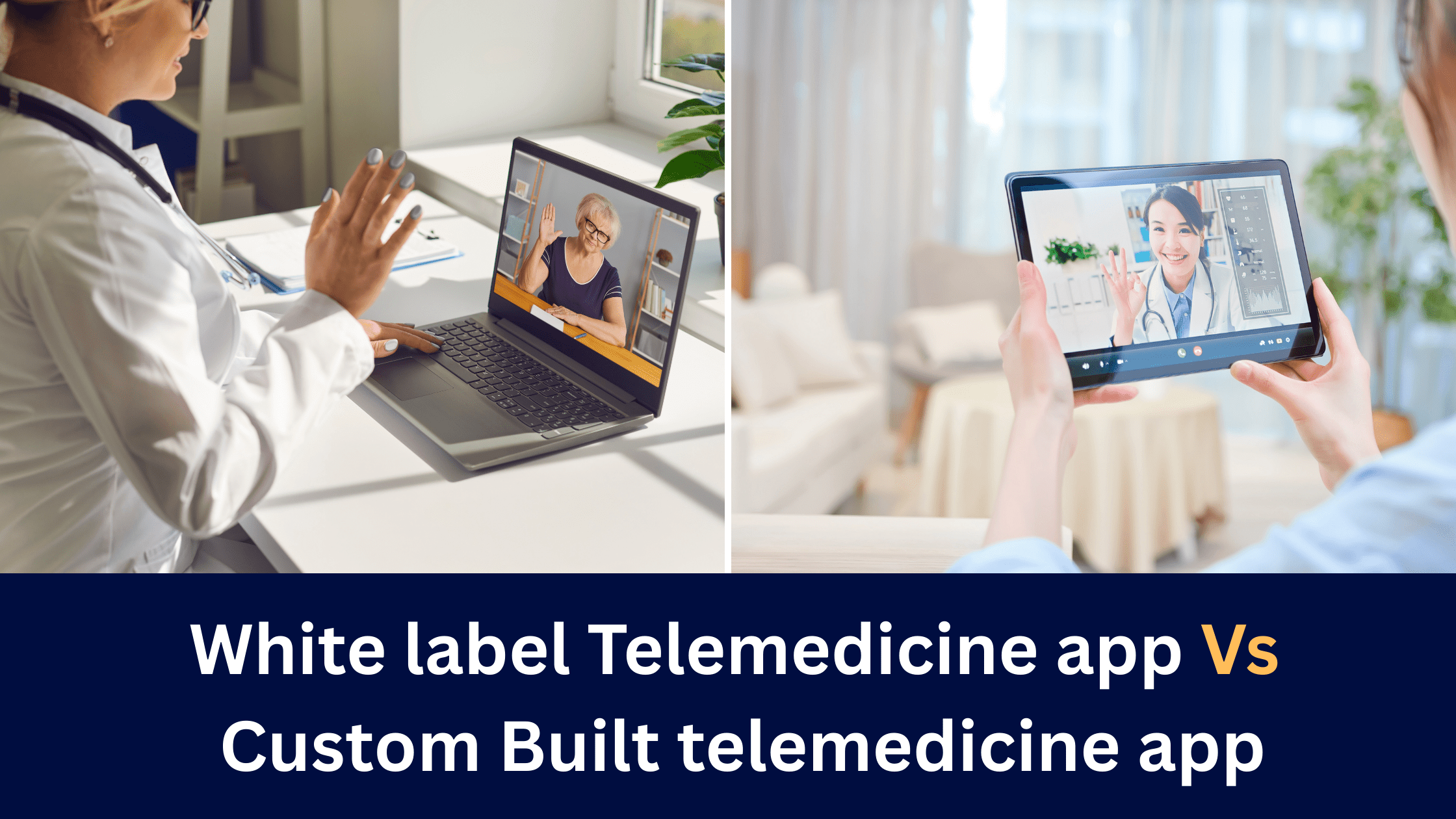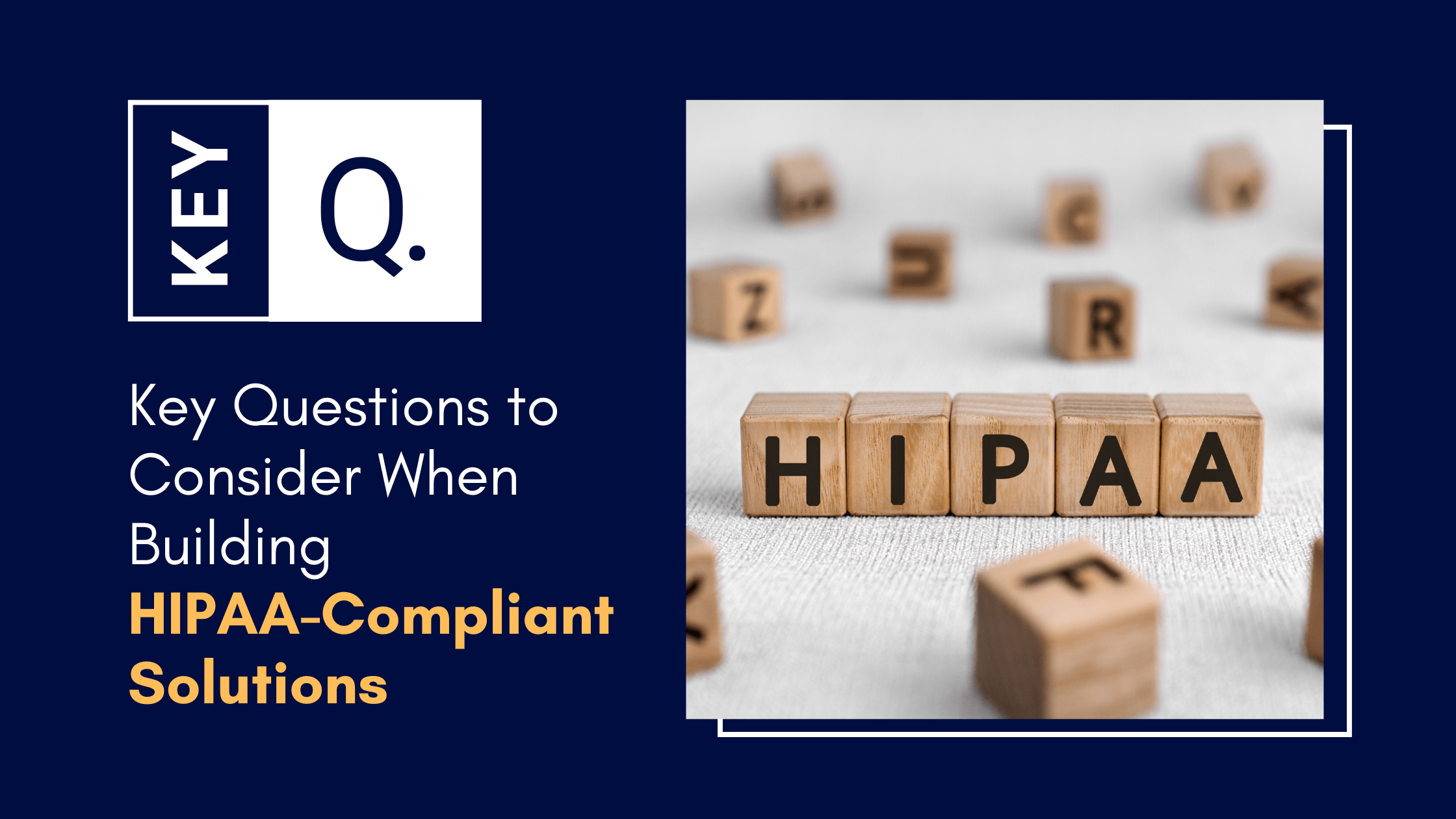
Summary: This blog traces the evolution of AI in healthcare — starting with early chatbots and moving toward today’s intelligent AI medical assistants. It explains the differences between chatbots and assistants, highlights key capabilities like task automation and contextual understanding, explores real-world examples, discusses current limitations, and looks ahead to the future of agentic AI.
Table of Contents
Introduction
When you open a clinic’s website and a little chat window pops up asking how it can help, you might assume it’s powered by a helpful assistant — maybe something close to a nurse on the other end, just a digital version. But more often than not, it’s not that smart. Ask it anything beyond basic scheduling or symptom keywords, and it starts to fall apart.
The terms healthcare chatbot and AI medical assistant get tossed around a lot as though like they mean the same thing. But do they?
Not really.
A healthcare chatbot is typically a basic interface — fast, useful, but limited. It might give you directions to the clinic, book a slot for a flu shot, or tell you to call 911 if you type “chest pain.” That’s fine, but it’s hardly the future of healthcare.
AI medical assistants, on the other hand, are something different. They don’t just answer questions — they process, adapt, and sometimes even think a step ahead. These tools are reshaping how clinicians work and how patients interact with care — behind the scenes and at the front door.
Learn more about – Digital Front Door Strategy for Healthcare: Streamlining Patient Access with AI
In this piece, we’ll outline the complexities of AI chatbots in healthcare. We’ll trace how simple chatbots — once little more than glorified FAQ widgets — are evolving into intelligent medical assistants that can help clinicians document visits, streamline admin tasks, and engage patients in more meaningful ways. The technology behind AI-driven healthcare solutions is changing fast — and the language we use to describe it needs to catch up.
What Is an AI Medical Assistant, Really?
Let’s get one thing straight: not every chatbot is an AI medical assistant. And not every AI medical assistant even looks like a chatbot.
A healthcare chatbot is usually designed to handle narrow tasks — things like answering frequently asked questions, booking appointments, or guiding users through a basic symptom checker. Most are rule-based. They work by following scripts: if the user says X, respond with Y. This makes them efficient, but not necessarily intelligent.
An AI medical assistant, on the other hand, is built on smarter foundations. It can understand natural language, extract meaning from patient input, adapt to different contexts, and even learn from interactions over time. Instead of just replying with a canned message, it might summarize a conversation, flag risk factors, or pre-fill a medical form — all while integrating with electronic health records and clinical systems.
The difference isn’t just technical. It’s practical.
An AI medical assistant can:
- Listen to a patient describe their symptoms in their own words — and still make sense of it
- Support doctors by generating SOAP notes or visit summaries after a consultation
- Handle repetitive admin work so human staff can focus on care
- Initiate follow-ups or send reminders based on a patient’s care plan
It’s less about giving answers and more about providing real, functional support — both to patients and clinicians.
So yes, it might look like a chatbot. But underneath, it’s something much more capable.
Learn more about – AI Medical Assistants: Benefits, Challenges, and Opportunities
The Evolution: From FAQ Bots to Context-Aware Companions
AI driven healthcare solutions are evolving fast. When chatbots first entered the healthcare space, expectations were modest. These early tools were built to serve a single purpose: save time. They could answer clinic hours, direct patients to the right phone number, or help book an appointment without involving a human receptionist. For most clinics, that was good enough.
One common example? A chatbot on a dermatology clinic’s website might ask a few multiple-choice questions about your skin concern and then offer a list of available slots with the next available doctor. It was basically a web form disguised as a chat.
But as more patients moved online — especially during the COVID-19 pandemic — the limitations of those bots became painfully clear. They couldn’t handle free-form questions. They didn’t remember anything about the user. And worst of all, they couldn’t adapt when conversations didn’t go as expected.
That’s where AI started to change the game.
Instead of relying on rigid scripts, newer tools began using natural language processing (NLP) to actually understand what patients were saying. They could handle open-ended inputs like, “I’ve been feeling tired and dizzy for a few days,” rather than just clicking through a pre-written menu.
Some systems went further. For example, Suki, an AI-powered voice assistant for doctors, listens during patient visits and automatically generates clinical notes. Others, like Q-Consultation – white label telehealth app, integrate with digital intake forms and smart chat agents so that by the time a patient joins a video call, the provider already has a structured summary of their issue — no need to repeat themselves.
That’s a big leap from, “Would you like to schedule a flu shot?”
The shift hasn’t just been about better tech — it’s about better care. These tools can now track patient history across multiple interactions, flag potential issues before they escalate, and support follow-up care with minimal staff input. In other words, they’re not just saving time — they’re improving outcomes.
What Sets AI Powered Medical Assistants Apart
If a chatbot is like a front-desk assistant following a flowchart, an AI medical assistant feels more like someone who’s actually thinking things through — or at least trying to.
The difference comes down to what these assistants can do. Not just in theory, but in the messy, real-life moments of healthcare — when things don’t follow a script.
1. They Understand Context (Sort of Like Humans Do)
The older chatbots didn’t care who you were or what you’d said five minutes ago. You could tell them, “I’ve already filled out the form,” and they’d still ask, “Would you like to book an appointment?” Frustrating.
AI assistants are better at picking up on context — like patient history, symptoms, or even the tone of a message.
Take HealthTap’s AI, for instance. It remembers your last visit, connects the dots with past health info, and gives recommendations that actually make sense. You don’t have to start from scratch every time.
2. They Do the Admin Work No One Wants
A lot of what clogs up a doctor’s day isn’t medicine — it’s typing. Filling out notes. Transferring info between systems. It’s exhausting.
That’s where tools like Suki come in. It listens during the appointment and drafts the clinical notes while the doctor focuses on the patient. By the time the visit’s over, the summary is already waiting in the chart. It’s not magic, but it feels close.
And before the visit even starts? Assistants like QuickBlox’s AI Assistant handle patient intake. They ask the right questions, sort the answers, and send over a neat summary — so the doctor isn’t flying blind when they join the call.
3. They’ve Got Your Back in the Exam Room
They don’t replace judgment, but AI assistants can still help with clinical tasks. Like spotting a drug interaction. Or reminding a provider to order a missing lab.
Glass Health is a good example. Doctors can input a case and get back a suggested care plan based on real medical guidelines. It’s not making decisions — it’s just helping you not forget stuff when you’re seeing 20 patients back-to-back.
4. They Actually Talk Like People (Most of the Time)
Here’s something that matters more than people realize: tone.
Newer AI assistants can shift how they speak depending on who they’re talking to. More casual if you’re young. More formal for older patients. Softer if someone seems nervous. Platforms like Carepatron even let you adjust this — like tuning a radio dial to fit your clinic’s style.
It’s not always perfect, but it’s a big step up from robotic “How may I help you?” loops.
Human + Machine: Not a Replacement, But a Partner
Let’s get one thing out of the way — AI powered medical assistants aren’t here to replace doctors. Or nurses. Or even front-desk staff. And honestly, they shouldn’t be.
They’re tools. Smart, useful, often impressive — but still tools.
Think of them more like assistants that don’t get tired. They can fill out paperwork, pull up the right chart, remind someone to follow up in two weeks, or flag something odd in a patient’s message. But they’re not making life-or-death decisions. And when things get complicated — which in healthcare, they often do — humans are still the ones in charge.
Some clinics are already blending this kind of AI-human teamwork into their daily routines.
For example, a primary care provider might use Suki to handle visit documentation, freeing them up to spend a few extra minutes actually talking to the patient. Meanwhile, their clinic’s SmartChat assistant takes care of after-hours questions — sorting out the simple stuff and flagging anything that needs a real person’s attention.
It’s not about doing everything with AI. It’s about doing the right things — the boring, repetitive, or time-consuming stuff — so humans can focus on care.
There’s also a trust factor. Most patients don’t mind chatting with a bot if it’s just about scheduling or getting a refill. But when emotions are high or the situation is complex, they want a real person. That’s not going to change anytime soon.
So no — AI medical assistants aren’t replacing anyone. They’re slotting in where it makes sense, catching the low-hanging tasks, and acting as an extra pair of (digital) hands in a very busy system.
Challenges and Guardrails
AI in healthcare isn’t just about what’s possible — it’s also about what can go wrong. These tools are improving fast, but they still need to be handled with caution.
1. Trust Doesn’t Come Built-In
People want to know who — or what — they’re talking to. If someone finds out later that their conversation was with a bot, not a person, that doesn’t always go over well. Even if the assistant did its job.
Same goes for clinicians. AI-generated SOAP notes might look polished, but if they leave out something important, that’s not helpful — it’s risky. For this reason alone, most professionals want to keep a human in the loop.
2. Data Privacy: Not Just a Checkbox
There are rules — HIPAA, GDPR, and others — but following the law isn’t always the same as doing things responsibly. AI assistants handle sensitive health data. That means it matters where the data is stored, who sees it, and how it’s used.
Some platforms — like Dragon Medical One or QuickBlox’s SmartChat Assistant — are built for compliance from the start. Others aren’t. The danger is assuming they are.
Learn more about – HIPAA Hosting Essentials: How to Keep Your Healthcare App Secure
3. Hallucinations Happen
Even the smartest AI can get things wrong. It might misread a message or fill in a gap with something that sounds right — but isn’t. In tech circles, this is called a “hallucination.” In healthcare, it’s a safety issue.
That’s why many clinics still require human review before anything is saved or sent. It’s not overkill. It’s just a safeguard.
4. Training Data Has Biases — Always
AI models are trained on data, and that data is never perfect. If most of the training samples come from one region, or one demographic, the assistant might miss patterns that show up elsewhere.
Sometimes it’s subtle. Sometimes it’s not. Either way, it’s something developers and providers need to take seriously.
So yes, AI medical assistants can do a lot — but they’re not infallible. The point isn’t to hold them back. It’s to make sure they’re built — and used — in a way that helps, not harms.
Looking Ahead: The Next Leap in AI-Enabled Care
We’re still early in the story. What we’re seeing now — AI assistants that can take notes, guide patients through forms, or send reminders — that’s just the beginning.
The next phase is already starting to take shape.
Instead of waiting to be told what to do, future AI medical assistants may start to act on their own initiative. Not in a reckless way — but in a useful, quiet way. For example, if a patient messages about recurring pain, the assistant could check their records, flag the pattern, and suggest a follow-up. Without anyone prompting it.
Some call this agentic AI — systems that don’t just respond, but plan, prioritize, and take action. Carefully. Thoughtfully. With built-in guardrails.
And we’re likely to see more integration with other tools too. Wearables, remote monitoring devices, appointment systems, EHRs — all feeding into a more complete, real-time picture of the patient. Not just what they said today, but how they’ve been doing all week.
In that kind of setup, an AI assistant doesn’t just support the visit. It becomes part of the care team between visits.
The result? Less friction. More proactive care. And, hopefully, better outcomes — without burning out the people delivering the care.
We’re not quite there yet. But we’re close enough to see what’s coming.
Conclusion: Smarter AI, Better Care
AI medical assistants are transforming healthcare — not by replacing humans, but by supporting them. From automating intake to preparing clinical notes, and now moving into agentic AI that can take meaningful action, these tools are making care more efficient, responsive, and patient-centered.
At QuickBlox, we’re building HIPAA-compliant AI assistants directly into our communication platform — helping healthcare providers streamline workflows and enhance patient engagement.
Ready to bring AI-powered assistants into your healthcare app?
Contact QuickBlox to learn how we can help.
Talk to a sales expert
Learn more about our products and get your questions answered.
Contact sales FAQs: Understanding AI Medical Assistants
1. What is healthcare AI, and how is it evolving?
It’s basically using AI to help with medical work — organizing info, handling forms, that kind of thing. Earlier tools were pretty limited, but now AI-driven healthcare solutions are getting better at understanding what’s actually going on in real time. They’re not perfect, but they’re learning fast.
2. How are AI chatbots used in healthcare?
AI chatbots in healthcare usually do stuff like answer basic questions or book appointments. Some just follow scripts. Others — the newer ones — can actually understand what people are saying, or at least try to. Especially when part of a bigger AI-powered medical assistant setup.
3. What are AI medical assistants?
An AI medical assistant is more than a chatbot. It might help fill out patient records, draft SOAP notes, or flag something important. It’s meant to support care teams — not take over, just lighten the load a bit. These AI-powered medical assistants are part of a wider move toward smarter tools in healthcare.
4. What is the future of AI in healthcare?
Hard to say for sure, but one thing’s clear — the role of AI in healthcare is growing. Systems are shifting from passive tools to more active, even proactive, helpers. AI medical assistants might soon help with follow-ups, reminders, or spotting patterns early. That’s the direction most AI-driven healthcare solutions seem to be heading.
5. How do AI chatbots differ from AI medical assistants?
They’re not quite the same. AI chatbots in healthcare handle the basics — simple tasks, canned answers. AI medical assistants go deeper. They understand context, assist with clinical work, and can tie into other systems. One’s helpful. The other’s becoming part of the team.








